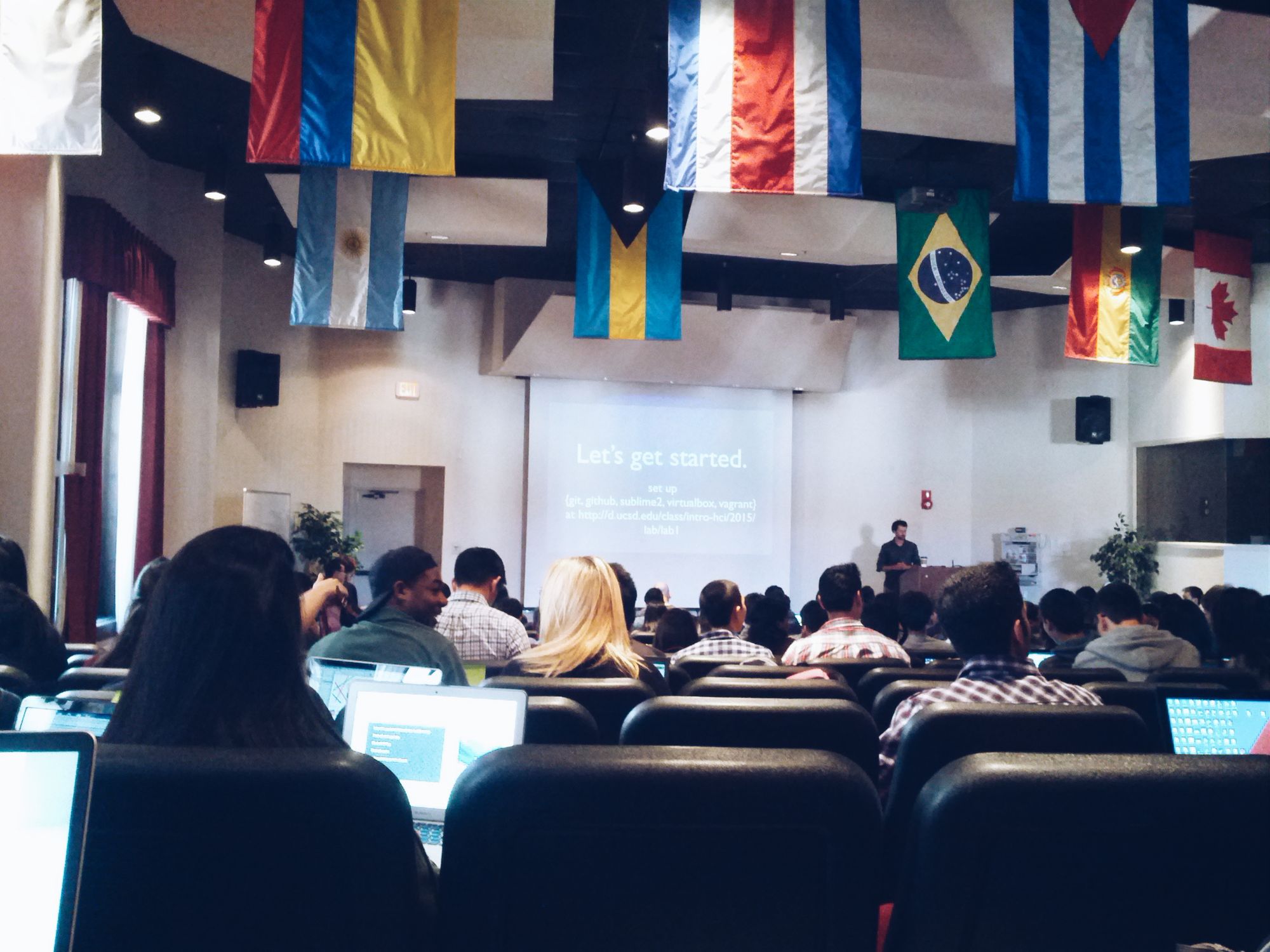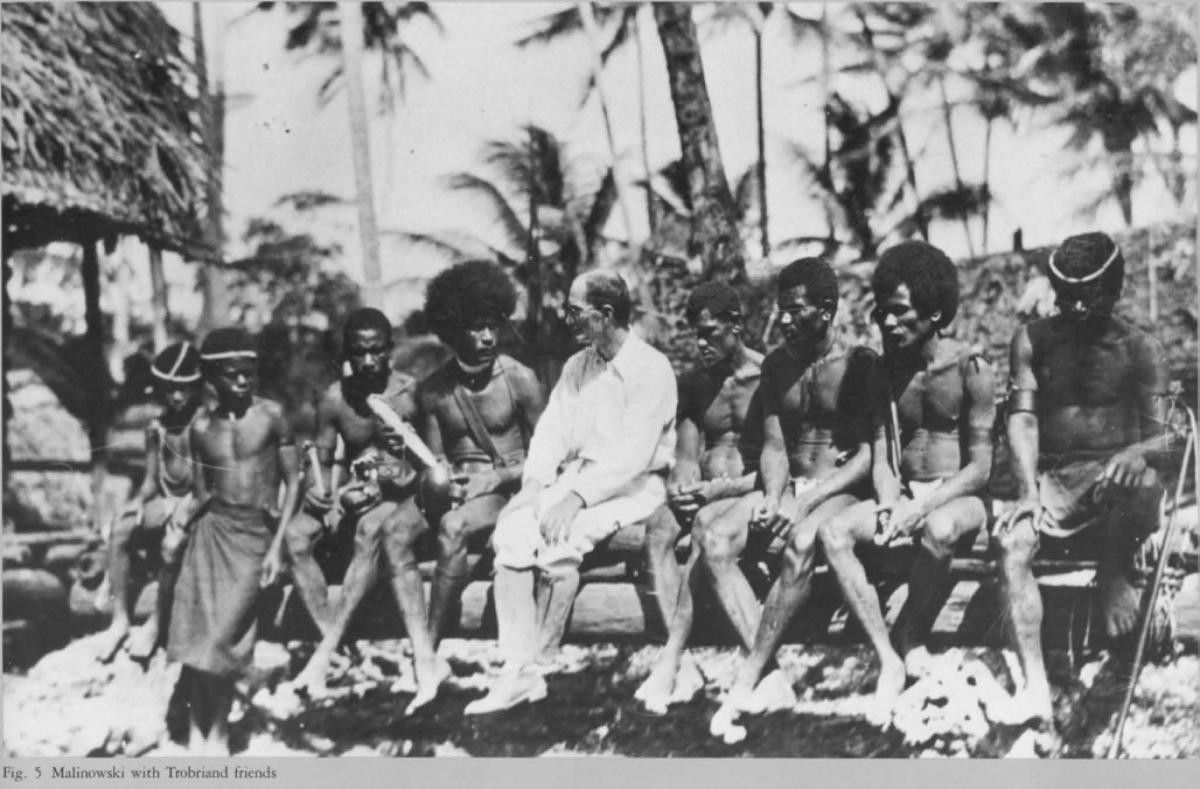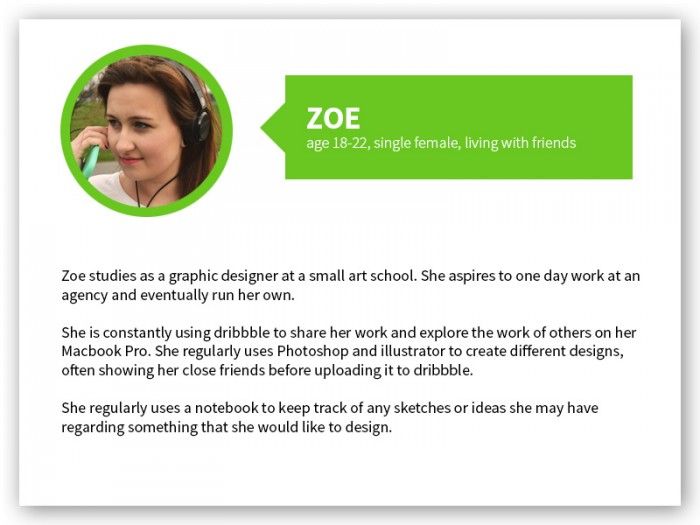Intro to HCI Lecture 1 – Needfinding
These are my notes in essay form from the Intro to Human Computer Interaction course taught by Scott Klemmer at the University of California, San Diego.

These are my notes in essay form from the Intro to Human Computer Interaction course taught by Scott Klemmer at the University of California, San Diego. All credit for content goes to Scott, any errors are my own.
One starting point for designing new products and technology is to clearly identify an existing problem or need. This is because finding big problems often yields important untapped opportunities for design. By observing people, you build empathy and put yourself in their shoes.
One example is an electronics firm that makes devices for truckers. These devices were underused by Truckers, and when asked why, the responses were minimal. However, it wasn’t until designers went into the field that they found that the truckers’ big hands and large gloves made it difficult to use the tiny keys on these devices.
The designers took this information and created a redesign that provided common responses with one click as opposed to lots of typing. The new device featured a dynamic display with big buttons and a stylus for precision input when necessary.
“You can observe a lot just by watching.” – Yogi Berra
Observing people is only one of the ways to begin designing an effective user interface. However, it’s often a good strategy to begin your design process by interacting with your users.
In 1914, Bronisław Malinowski travelled to Papua New Guinea to conduct fieldwork in the Trobriand Islands. While he was there, World War I broke out, leaving Malinoski with the choice of either hanging out in the Trobriand Islands or being interned. Needless to say, Malinoski decided to stay on the Trobriand Islands.
During his time on the islands, Malinowski developed the practices of participant observation which remain a hallmark of ethnographic research to this day.

This idea of “Deep Hanging Out” as coined by Genevieve Bell is exactly what Malinowski did with the natives. Deep Hanging Out is spending time with people doing their work and living their lives. By doing this, you can get beneath the surface of what people say to learn about what they actually do.
If you’ve ever lived in another country, you’ve realized that every culture has traditions and rituals that may be unfamiliar and foreign to you. But you don’t have to go very far to recognize the beautiful complexity of culture.
For example, being a student requires an enormous amount of practical knowledge and constitutes a large number of practices that are enacted every day that students are rarely conscious of because it’s an everyday behaviour. But if someone were to be suddenly dropped into being a student with no knowledge of what student life was like, they’d have all sorts of trouble. Furthermore, many of the practices that are part of everyday behavior can be difficult to articulate.
Therefore, there are five key things to learn by observing participants:
1 – What do people do now? What’s the baseline that we’re starting from?
Getting a full understanding of the culture, practices, and rituals of your target audience provides an understanding of your audience that is extremely helpful. Digging deep into the motivations, emotions, and aspirations of your audience allows you to better understand where to begin.
2 – What values and goals do people have?
Most often, we’ll want to build technologies that align with what people care about and what they hope to accomplish. This doesn’t mean literally building what people have asked for because people often don’t know how to best achieve their goals, especially for disruptive technologies. Instead, this is about designing technologies that will weave themselves into the fabric of people’s everyday lives, even if they introduce new concepts and functionality.
3 – How are these particular activities embedded in a larger ecology of behaviors?
For the individual bus or subway user, the bus or subway segment is a part of a larger activity like getting to a friend’s house commuting to work, or going to the grocery store. By understand the constraints and goals of the large activity, you may come up with ideas that you wouldn’t have if you were just thinking about the bus ride more narrowly.
By figuring out why someone would choose to take the bus or not take the bus, you as the designer might end up with something more broad, like creating a mobile application that helps people figure out when a bus is coming, or the best way to get from one destination to another.
Taking this broader view can help you be more effective as a designer by helping you design for the larger activity that people are engaged in.
4 – What similarities and differences can be found across different people?
In our bus example, a low mobility user might care enormously about the accessibility of the bus, while somebody else may be concerned primarily with the cost, and yet another person may be concerned primarily with the efficiency in getting there.
5 – What other contexts, like time of day, influence people’s behaviors?
Pay attention to any other things that may contribute to the way that people are behaving. This requires paying very close attention and observing the nuances of what people do.
Observing the Experienced
Another good strategy for finding needs is to be an apprentice under someone who has experience with the area you are working on. For example, if you’re building a better supermarket checkout system, you could find needs by apprenticing as a clerk and learning the different workarounds that clerks do as a part of their job.
One illustration of the power of being in the presence of an expert comes from Jack Whalen and colleagues at Xerox PARC. While studying a call center for photocopier repair, they found that diagnosing photocopiers over the phone can be extremely difficult.
Unsurprisingly, after studying the support staff, they found that the most effective person was the person who had been working there the longest. To their surprise, however, the second most effective person wasn’t the person that had been working their the second longest, but the person who had been sitting next to the most effective person. Thus, by sitting next to an expert, these repair technicians were able to pick up all of the informal skills of doing repair work that aren’t written down in manuals anywhere, which were the skills that helped somebody really excel in their job.
If you see something that catches your eye while being an apprentice, be sure to interact and validate it with the people you’re working with so you can better understand why things are done the way that they are. Additionally, pay attention to all the artifacts that compose people’s work, because the ways that people have hacked their equipment to make their work more effective is an indication of ways to innovate.
For example, Post-It notes have traditionally been used as artifacts to help users more easily navigate different routines. Think about a fax machine or other piece of equipment that has Post-It notes reminding people how to use stuff.
A harmful attitude about designing, although less common nowadays, is the tendency to think people who can’t figure out how to use technology are simply incompetent. Using another example from Xerox PARC, Lucy Suchman recorded a video, that has now become legendary, of two people trying to produce a double sided copy of 50 pages of paper.
According to legend, when Lucy shared the video with the executives, they wrote the users off as dumb. However, when it was revealed that the two users were Allen Newell and Ron Kaplan, two of Xerox’s premier research scientists, they were no longer able to say that it was because the users did not know how to use technology. Ultimately, this video shows that if you are unfamiliar with a particular piece of technology, it can be difficult to figure out how to use it without an intuitive user interface.
Interviewing
When it comes to interviewing, one key distinction that must be made is the difference between what people say and what people do.
For example, Walmart conducted a study asking its customers whether they would like the aisles to be less cluttered. Unsurprisingly, the participants of the study responded affirmatively. Walmart then proceeded to declutter their aisles, remove inventory, and lost a billion dollars in sales.
What happened? In this situation, Walmart made two key mistakes. First, they listened to what people said rather than paying attention to what people did. Second, they asked a leading question. Those two mistakes led them to do exactly the opposite of what would be most effective.
“If I asked people what they wanted, they would have said faster horses” – Henry Ford
The starting point of any good interview is picking a good interviewee. A good collection of interviews from people of different backgrounds allows for diverse perspectives that can better help you spot trends that are common among different perspectives. If you are trying to interview people for a product you are building, you may be able to glean good insights from people who are current users of a similar system as well as people who are non-users.
Good interviewees can be found through friends and family, as well as sites like Craigslist or even Twitter. (You may need to provide compensation as an incentive for people to take interviews)
However, you may not always be able to get an interview with the ideal person, so you may need to approximate. The key is to be open to any insights or thoughts that users or potential users may have.
One group of users, known as lead users, can be extremely helpful in the interview process as well as the development process. Lead users are the knowledgeable early adopters that can help provide valuable feedback that can directly help you build a better product.
Asking Good Questions
What makes a good question when you’re interviewing? Take this example and decide whether this is a good question. The question is: “Is the daily update an important feature to you?” When asked a question like this, most users would say “Yes.” It’s kind of a leading question. Most people, when asked if something’s important, would say “Sure, why not?” What’s at stake? Why would you say no? If you wanted to learn about the daily update, participant observation might be a lot more effective because you could see whether people actually use the daily update. Or you might even use log files as a way of driving your questions. So, for example, you might ask somebody, “I see from the log that you’ve never used the daily update. Why is that? Tell me more.”
Other kinds of questions to avoid:
- Questions that ask what users would do, like, or want in hypothetical situations – These questions often generate replies based on a person’s ideal, hypothetical world, not necessarily what they would actually do.
- Questions that ask how often users do things – Asking a user how often they go to the gym generates responses that reveal how often they’d like to go to the gym, not actually how often they do.
- Questions that ask how much they like things on an absolute scale – Asking a user how much they like something is often not extremely valuable or insightful.
- Binary questions – Questions that only have two answer choices, like questions that ask on an absolute scale do not provide any significant insights into how you should build your product.
- Good questions are questions that are open-ended, have a specific goal, and are unbiased. For example, instead of asking how often a person goes to the gym, you should ask them to tell you about the most recent time that they went to the gym.
- Having a specific goal with each question allows you to uncover specific things with each question. If a question leaves your interviewee stumped for a little bit, that is a good thing. A little bit of silence is golden.
One common problem for people who are new to interviews is that they often say that there’s nothing to be found for the problem they’re tackling because it’s either impossible or obvious. However, it’s rarely the case that there is nothing new. Malcolm Gladwell has a wonderful explanation in the introduction to his new book of collective stories “What the Dog Saw”.
“The trick to finding ideas is to convince yourself that everyone and everything has a story to tell. I say trick, but what I really mean is challenge, because it’s a very hard thing to do. Shampoo doesn’t seem interesting? Well, dammit, it must be, and if it isn’t, I have to believe that it will ultimately lead me [to something] that is.” – Malcolm Gladwell
If an interviewee’s answer doesn’t quite answer what you were trying to get out of the question, follow up with other questions that clarify what you’re trying to get at. Paying attention to how your questions are answered also allows you to better understand how to ask good questions that generate the answers you’re looking for.
Examples of good questions:
- When was the last time you used a specific application?
- What were the first things you did when you woke up this morning?
- What are three words you would use to describe your experience with a specific task?
- What did you do after a certain circumstance / situation happened?
Other Interviewing Considerations
Another consideration to keep in mind is the location of the interview. Interviews should take place in as realistic of a location as possible. For example, interviewing grocery shoppers is best done in grocery stores because it allows the interviewee to answer based on physical triggers that cause different behaviors that might not be mentioned otherwise. Conducting interviews in realistic location also allows you as the interviewer to better understand what your interviewee is talking about.
A common question about interviewing is whether or not it should be recorded. Recording audio or video has benefits as well as drawbacks that should be considered. The drawbacks of recordings are that they can be time consuming to review and edit, requires permission, but most importantly can change a participant’s response. However, recordings provide a robust record and can help you focus on interviewing so you don’t have to do that while taking notes.
A good compromise is taking photos. Photos are quick and easy to take, provide a visual record, but does so without changing a participant’s response.
Beyond Interviewing
Although interviewing is a great way to do user research, interviewing also has it’s limits. Interviews only provide a snapshot of what a user’s experience is like, and is often limited by what the user tells you.
One solution to this problem is doing a diary study. Essentially, a diary study prompts users to record their thoughts or feelings based on some trigger. This could be asking the user to take a picture every time they eat a meal, write down how they feel every time they watch a television show, or something along these lines. This allows you to sample users’ experience at given points throughout their day.
Personas
The final step, after conducting as many user interviews as you possibly can, is to develop personas. Personas are fictional characters that you use to represent the demographics of your users. For example, if you are developing a messaging application, your personas can include teenage males who are using your messaging app to keep up with his classmates as well as middle-aged mothers who are using the app to message their kids.

The value in having personas is being able to quickly pinpoint different use cases among different demographics of people. By assigning a concrete name to a certain demographic, it becomes easier to keep that specific demographic in mind. Personas should be as detailed as possible, and be a compilation that most accurately represents different groups of your users.
Beyond just demographic information, however, a persona should also capture a person’s motivations, beliefs, intentions, behavior, and goals. In other words, give your persona a story to tell. It also helps to put a face to the persona, so that you can easily visualize the person that you are developing for. Having this information makes the next step, prototyping, much easier.